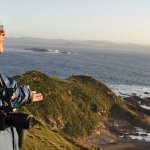Leia o artigo em Português aqui.
Reentrâncias Maranhenses is a region on the western coast of Maranhão, in northeastern Brazil. It was designated a Western Hemisphere Shorebird Reserve Network (WHSRN) site in 1991. The number of migratory shorebirds using the region is so large (hundreds of thousands!) that it warranted inclusion in the Network as a Site of Hemispheric Importance – the only one in Brazil with this status!
With an area of 6,624,665 acres (2,680 911 ha), the Reentrâncias Maranhenses WHSRN Site hosts a large portion of the population of four shorebird species that migrate from North America during the austral summer: Black-bellied Plover (> 50%, Pluvialis squatarola), Ruddy Turnstone (> 70%, Arenaria interpres), Willet (> 40%, Tringa semipalmata), and Whimbrel (> 40%, Numenius phaeopus).
The characteristics of the wetlands in this region are unique. The name of the region, “reentrâncias”, refers to the extremely rugged and low-lying coastline, with numerous bays dotted with islands, sandbanks, tidal channels, estuaries and extensive mangroves, which provide excellent habitat for our shorebirds. These inlets are part of the largest continuous stretch of mangroves (1,781,627 acres) on the planet, stretching from Maranhão to Amapá and forming the Amazon Estuary and its Mangrove Ramsar Site. No wonder so many shorebirds choose this WHSRN site to rest during the non-breeding season or when migrating to the northern and southern ends of the Americas.
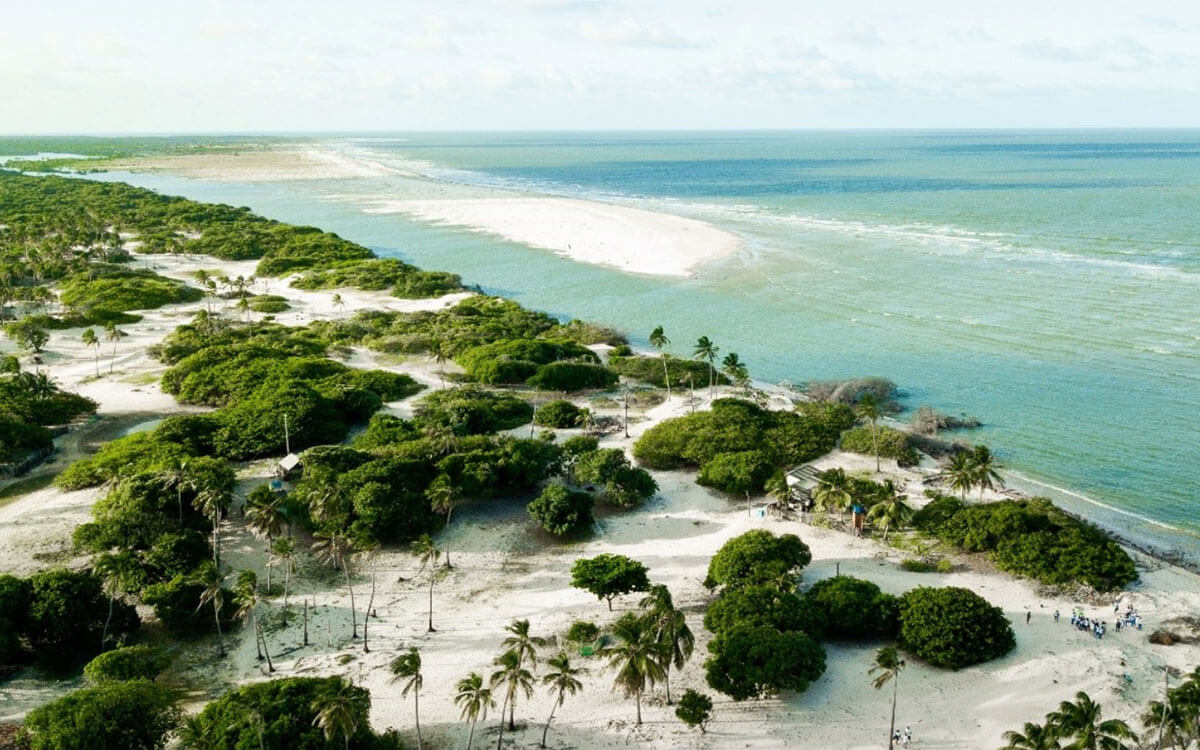
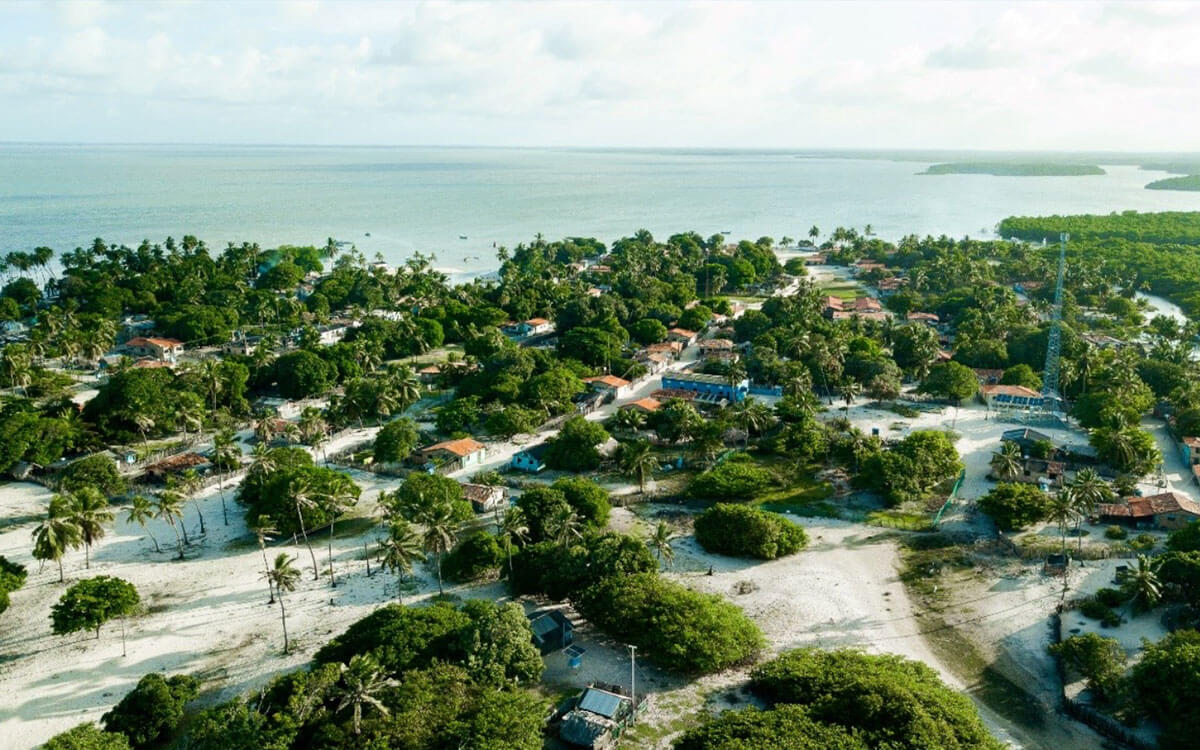
The coastal landscapes of Reentrâncias Maranhenses. Photo: Edgilson Pinheiro
Since its designation as a WHSRN Site, activities related to shorebirds and their conservation have focused on monitoring bird populations (aerial and ground counts) and tagging thousands of individuals. However, work remains to be done with local communities and other stakeholders.
There are 15 municipalities in the site area, with approximately 250,000 inhabitants. Most of the population living in the coastal region has or has had contact with artisanal fish and shrimp fishing. However, despite being economically dependent on the wetlands and experiencing this environment daily, communities and local government representatives have limited knowledge of migratory shorebirds. They often confuse large flocks of shorebirds with “little birds”. Only those who eventually hunt these birds can recognize them.
The North Coast of Brazil Project, developed by SAVE Brazil in collaboration with the WHSRN Executive Office and support from Manomet Conservation Sciences, Environment Climate Change Canada, and the Bobolink Foundation, aims to connect the entire Reentrâncias Maranhenses site-environment, birds, and people-to the Hemispheric Network and to national and international shorebird conservation strategies. It also seeks to understand if there are other potential sites in the region. The actions are aligned with the Plano de Ação Nacional para a Conservação das Aves Limícolas Migratórias – PAN Aves Limícolas (National Action Plan for the Conservation of Migratory Shorebirds – PAN Shorebirds) and the Atlantic Corridor Shorebird Initiative (AFSI).

Schools in Cururupu, June 2024. Photo: SAVE Brasil
Over the past year, we have provided traditional communities and local and regional authorities with information on the biology of shorebirds, their migratory dynamics, and the importance of wetlands for maintaining their populations. Actions focused on three main axes: a) bird counts, b) involvement of local authorities, schools, and the public, and c) training of the local tourism sector.
The monthly count of shorebird populations along São Marcos Bay and São José Bay, in Maranhão, follows the International Shorebird Survey (ISS) protocol. Despite the logistical difficulties inherent to the region, the surveys are conducted at five locations on São Luís Island and have already resulted in nearly 100 lists submitted to eBird following the ISS protocol. January is the month with the highest total abundance of shorebirds, and the most common species is the Semipalmated Sandpiper (Calidris pusilla), with nearly 14,000 birds counted. However, in March, the Willet (Tringa semipalmata) and the Black-bellied Plover (Pluvialis squatarola) are the most common species.
The engagement with the public sector was carried out through a series of presentations and training courses for environmental, education, and tourism officials from the State and key municipalities during this project’s first phase. In addition to information about birds and the great value the region holds for them, the added value that birds and their conserved habitats bring to the region was emphasized, using tourism as an example. The importance of public, private, and non-governmental collaboration for effective bird conservation was also highlighted.
The school activities used games to teach younger children in Early Childhood Education (ages 3 to 5) and Primary Education (ages 6 to 14) about what birds are and their needs. Plaster beak molds, feeding games, bird puppets, and tablets with videos of shorebirds at their nests allowed children to explore different senses while learning about the various adaptations that shorebirds have for migrating and feeding on beaches and mangroves. All children who participated in the activities (a total of 662) received support materials to take home and continue learning with their families. The “Bicoletim,” a play on words referencing a bird bulletin (“beak”), tells the story of Margot, a Ruddy Turnstone (Arenaria interpres) found in 2023 in Ilhéus, Bahia, and banded in New Jersey in 2013. The story is told in an interview format with Margot and has succeeded greatly. The activity book “Shorebirds in the Americas,” which is part of the Discover Shorebirds curriculum in Portuguese, has also been distributed and has become an incredible tool for conducting activities with the children. At the principal’s request, some schools also organized hands-on birdwatching activities in the field. Six schools were visited in two municipalities — Raposa and Cururupu, Maranhão.
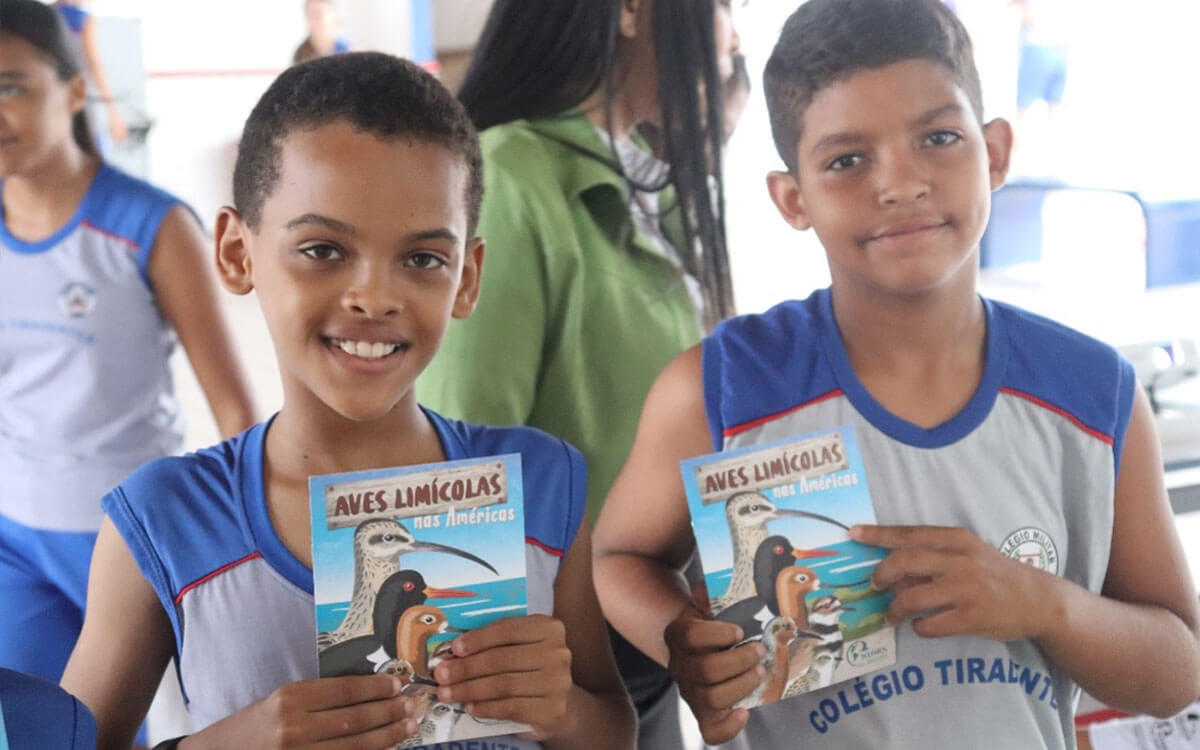
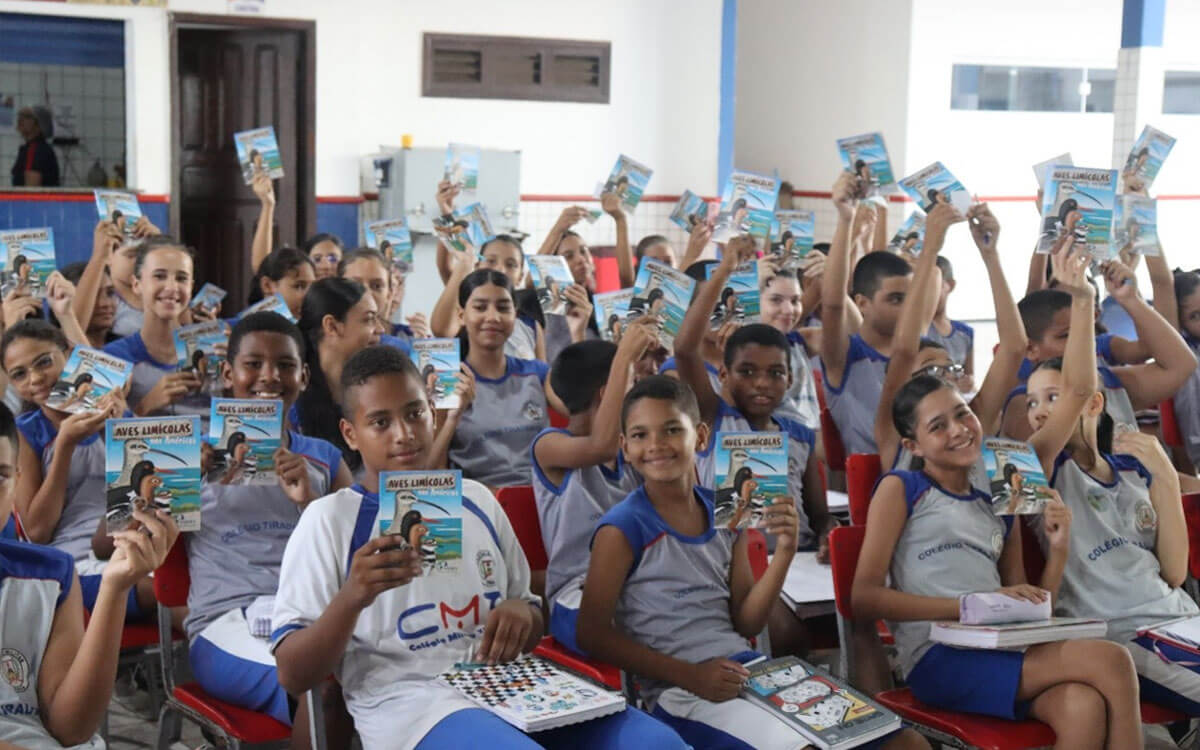
The activity book “Shorebirds in the Americas,” part of the Discover Shorebirds curriculum in Portuguese, was distributed and is an excellent resource for conducting activities with children. Photos: Save Brasil
Training workshops for the tourism sector were also held in Raposa, Maranhão. The natural beauty of the surroundings and the tourists’ demand for leisure and relaxation in nature offered an opportunity to add value to excursions. The goal was to train tour guides and boat operators to identify species using an identification sign and provide information about shorebirds’ biology, migration, threats, conservation, and regional importance. In this way, we raised awareness among both service providers and tourists. The training of 20 local tourism service providers has coined the new term “shorebird-friendly tourism.” The following steps include training hotels, inns, and restaurants in the municipality.
The path to seamless integration into the network is long, but it is already possible to see that the curiosity, admiration, and care demonstrated by the communities involved in the actions of the North Coast Project of Brazil have opened the door for the Reentrâncias Maranhenses to embrace their status as a WHSRN (Western Hemisphere Shorebird Reserve Network) Site of Hemispheric Importance and to use the experiences made available by the network, adapted to their reality.
Our hope is that each community and each of the identified stakeholders will recognize the shorebirds and teach their children and friends about the incredible journeys these birds can make. This will influence everyone’s actions, increasing respect for the birds and the environment they depend on. In doing so, our mission to conserve wetlands and shorebirds would finally be fulfilled.
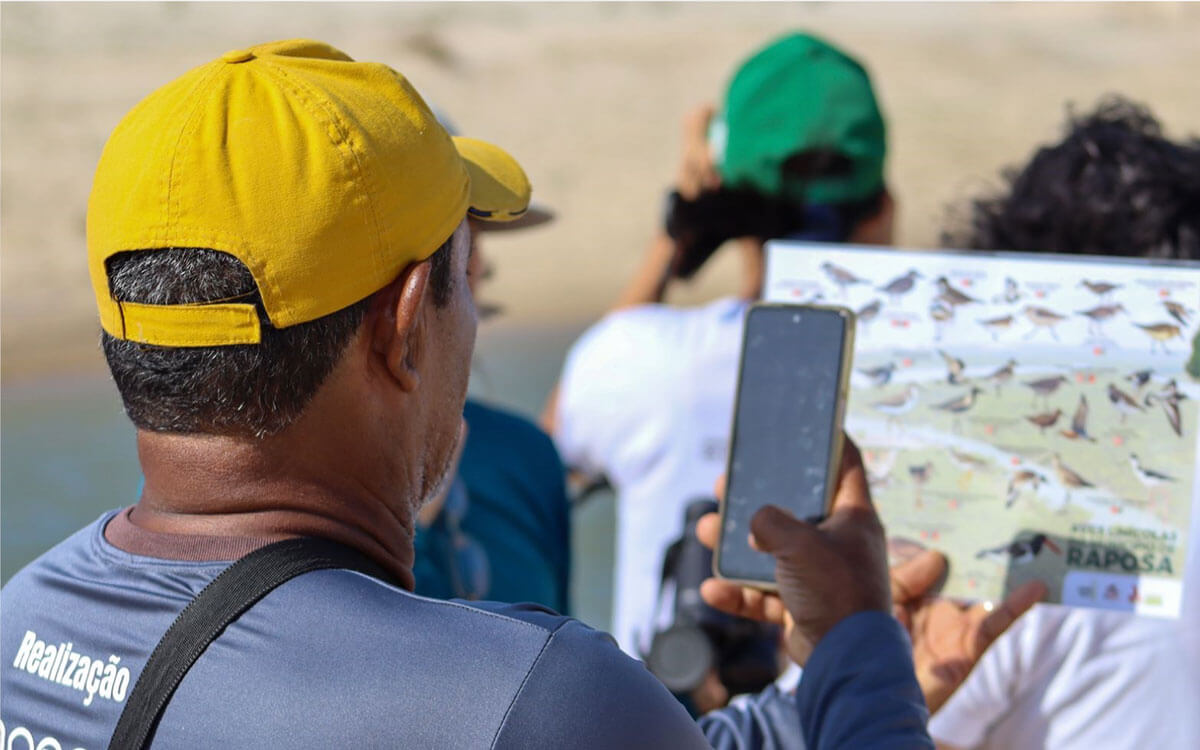

20 local tourism service providers were training and a new term was coined: “shorebird-friendly tourism”. Photos: Save Brasil
Cover Photo: Aerial view of Reentrâncias Maranhenses, Brazil. Photo: Edgilson Pinheiro






